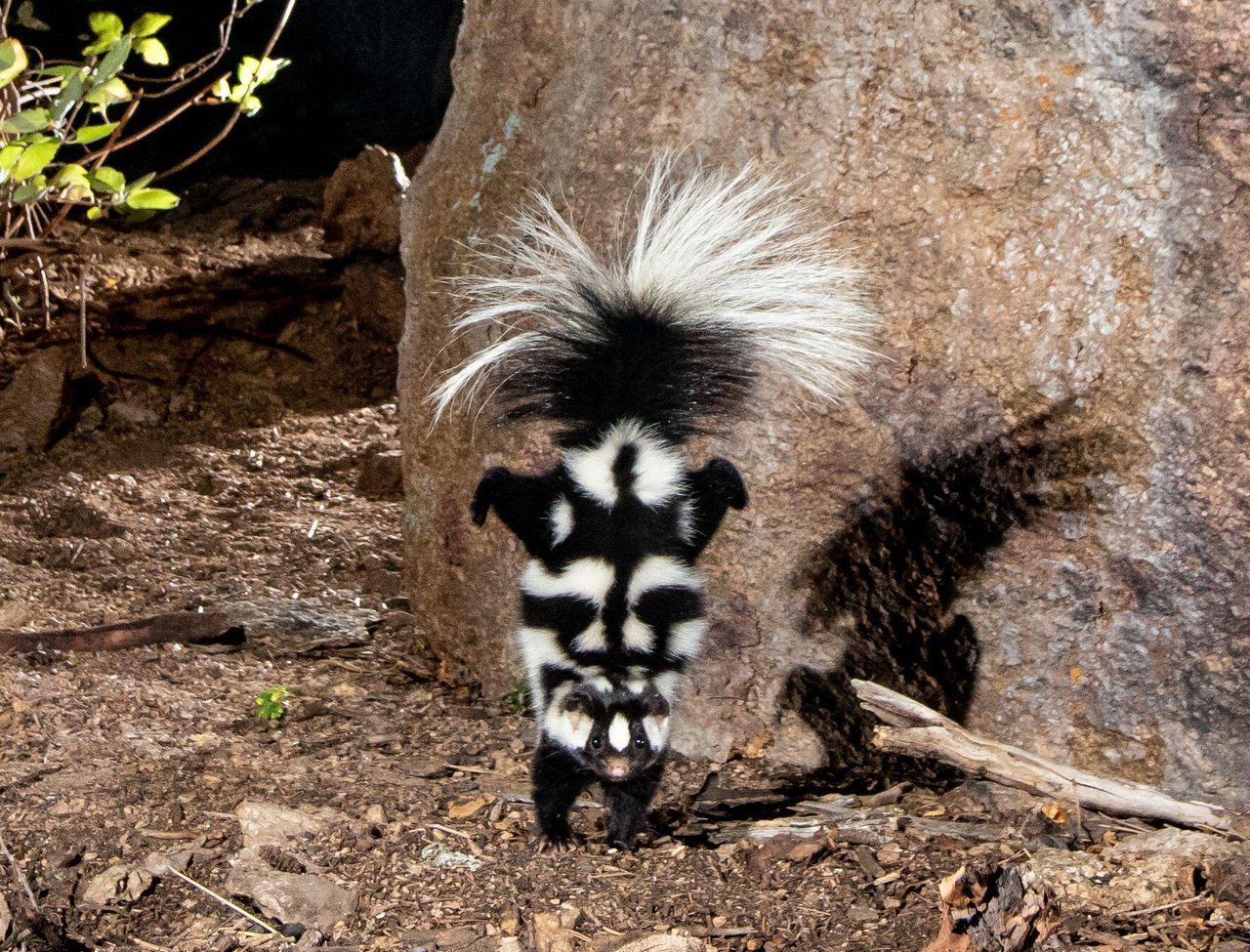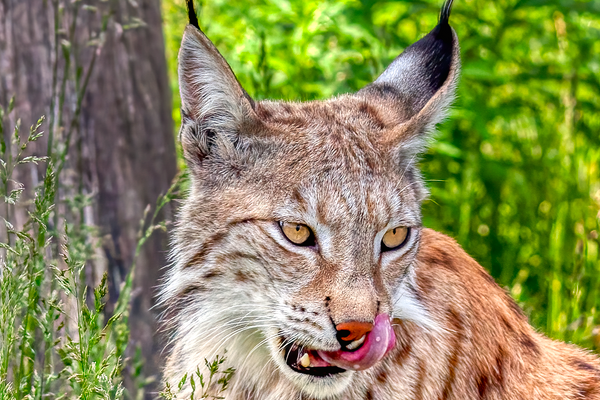10 Tales of the World’s Quirkiest Animals
A celebration of curious, overlooked, and misunderstood creatures.
Like most of the world, we here at Atlas Obscura have a soft spot for adorable animals. But we’re also entranced by the weirdest ones: the rare, the quirky, the curious, the overlooked, the unloved, the so-ugly-they’re-cute. As we celebrate our Summer of Wonder, we dug into our archive to find 10 of our favorite animal oddballs, from gummy bear–like frogs and elusive pink armadillos, to break-dancing skunks and a misunderstood island cat.
Wanted: Sweet Skunks That Do Sick Stunts
by Ashley Stimpson
All skunks douse would-be predators with a noxious spray, but only the spotted skunk, which lives throughout North America, from British Columbia to Costa Rica, announces its intention to do so in a wholly ostentatious fashion: on its front paws, in a dramatic handstand with its tail skyward, a move that makes the animal seem twice its size.

Puerto Rico’s Most Adorable Frogs Live in Caves and Fight Like ‘Gummy Bears’
by Hannah Tomasy
The tiny Puerto Rican rock frog, also known as a cave coquí, or coquí guajón, has huge eyes to see in its dark home, a high-pitched, whistling call that could be mistaken for a bird’s, and a fighting style that one researcher describes as “two gummy bears sticking together and just rolling around.”
How the Enchanting, Elusive Pink Fairy Armadillo Became One Scientist’s Obsession
by James Hall
In the scrublands of Argentina, there lives a miniature armadillo that looks like it could have scurried straight out of the illuminated pages of a medieval bestiary. The pink fairy armadillo, as it is aptly named, has a bubblegum pink shell, paws, and tail. And that’s about all scientists know about the hard-to-find animal. “They are a total enigma… We don’t even know if they are common or rare,” says one researcher.

Won’t Someone Please Think of Brazil’s Least-Adorable Marmoset?
by Ashley Stimpson
Brazil’s buffy-tufted-ear marmoset is one of the world’s most endangered primates. Its challenges include a disappearing habitat, diseases such as yellow fever and zika, and interbreeding with common marmosets. But saving them has been difficult for another reason: the buffy-tufted-ear marmoset just isn’t all that cute.
The True Origin Story of Madagascar’s ‘Forest Cat’
by Jennifer S. Holland
Scientists have long thought that the lemur-hunting “forest cats” of Madagascar were descendants of wildcats that somehow reached the island from mainland Africa, but new research has shown that these oversized, tiger-striped felines are actually related to domestic cats, which arrived from the Arabian Sea region on trading ships some 1,000 years ago.

The Uncertain Future of Finland’s Rare Freshwater Seals
by Michael Hunt
Once little known and rarely seen, the norppa—one of the world’s few freshwater seals—who call Finland’s Lake Saimaa home, have begun to rebound, returning to parts of the lake they once abandoned due to fishing. Are they now victims of their own popularity, as tourists flock to see them sunning on the shore?
The Outsize Allure of South Africa’s Flightless Dung Beetle
by Sandra MacGregor
In Addo Elephant National Park in South Africa, the smallest residents may be the biggest draw: Circellium bacchus, a rare subspecies of flightless dung beetle thrives on the excrement of the park’s elephants. And the park takes its responsibility as a beetle sanctuary seriously. The area is dotted with signs that warn visitors that the beetles have the right of way, and that it’s forbidden to drive over balls of dung.

Can the Mighty Bankhar Dogs of Mongolia Save the Steppe?
by Shoshi Parks
On the vast grasslands of Mongolia, there are predators, there are prey, and there are the bankhar. These large, powerful dogs weigh up to 125 pounds, with shaggy, thick coats that give them a bear-like appearance. For 15,000 years—until the dawn of the Soviet era—bankhar dogs were the guardians of the steppe. Now, an ambitious project aims to return bankhar dogs to their traditional role as protectors of the flocks and the livelihoods of the region’s herders.
This New Species Is a Fish Out of Water
by James Hall
Where the humid Amazon rainforest meets dry Chiquitano dry forest in Bolivia, a wildlife researcher made an unexpected discovery: a small, shimmering fish that lives in shallow puddles and leaps on to land to avoid threats. In other words, the newly identified Juan Derbia killifish is a fish out of water—by choice.

The Cute Critter Rewriting Our Understanding of Prehistory
by Manvir Singh
At first glance, the cuscus looks like a cross between a cat, a monkey, and a Furby. An herbivorous marsupial found in New Guinea, Australia, and the surrounding islands, it has sharp claws, a tail that wraps around branches, and forelimbs that look eerily like human hands. Long before cows and chickens, cuscuses may have been the original livestock.










































Follow us on Twitter to get the latest on the world's hidden wonders.
Like us on Facebook to get the latest on the world's hidden wonders.
Follow us on Twitter Like us on Facebook